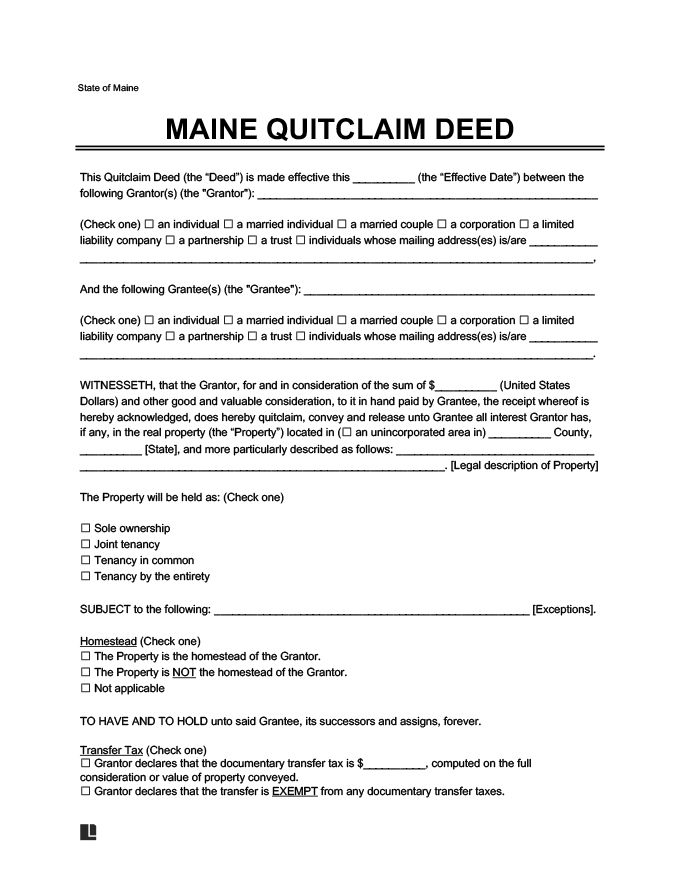Filing a quitclaim deed without covenants in Maine can be complex. Whether you are correcting the existing deed, adding a new owner, or transferring your property interest, you can streamline the process by following these steps.
Step 1: Secure a Copy of the Property Deed
You will need a copy of the current property deed to proceed with your quitclaim deed. You may already have access to the deed if you are the property owner. If not, you can contact the current owner or register of deeds in the county where the property is located.
Step 2: Identify the Legal Property Description
Locate the property’s legal description on the current deed. It should include the city, town, or unincorporated property location per Me. Stat. tit. 33 § 651. The legal property description is required for recording purposes. If the property is a condominium or other unit, include the land description and unit identification number, per Me. Stat. tit. 33 § 570.
Step 3: Create a Property Disclosure Statement
Me. Stat. tit. 33 § 173 requires the grantor to provide certain property disclosures when selling real estate to a new owner. These disclosures address important system details about heating, insulation, water supply, and waste disposal. Additionally, they advise of the presence of hazardous materials, known defects, and public access to the property.
Step 4: Complete Your Maine Quitclaim Deed Form
Once you have the property description, you can create a quitclaim deed form in compliance with the following Maine Registry of Deeds requirements:
- 1 ¾ in. margin on top of first page
- ¾ in. maximum side margins
- 1 ½ in. bottom margin on last page
- Minimum 10-point Times New Roman font
- Maximum paper size 8 ½ in. x 14 in.
- Legibly printed or typed in dark ink on white paper so it can be reproduced using microfilm, photocopies, and other recording methods
- Adequate space for recording information, per Me. Stat. tit. 36 § 653
You can pull statutory language for a quitclaim deed without covenants from Me. Stat. tit. 33 § 775(4). Per Me. Stat. tit. 33 § 761, you do not need to use the exact wording. Use precise terms that do not imply covenants or warranties.
In addition, you should include the following details:
- Full name of grantor (Me. Stat. tit. 36 § 653)
- Full name and mailing address of grantee (Me. Stat. tit. 33 § 456)
- Granting language (Me. Stat. tit. 33 § 775(4))
- Details regarding co-ownership, if applicable (Me. Stat. tit. 33 § 159)
- Printed name of each signer under their respective signatures (Me. Stat. tit. 33 651-A)
Although Me. Stat. tit. 33 § 353-A states that deeds do not require a statement of consideration, it is wise to include consideration details for legal and tax purposes.
Step 5: Execute the Deed in the Presence of a Notary or Authorized Agent
For the document to be valid, the grantor must sign the quitclaim deed in the presence of a notary or other approved individual, per Me. Stat. tit. 33 § 203. The names of each signer must be printed or typed clearly below their signatures.
Step 6: File the Quitclaim Deed
All deeds must be recorded with the register of deeds in the county where the property is located, in accordance with Me. Stat. tit. 33 § 201. You can find your county register on the Register of Deeds website. Due to its size, Aroostook County is divided into northern and southern districts.
